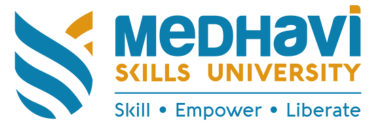The evolving landscape of local regulations in South Africa has significantly shaped how Skyhills can develop and operate within the country. With regulatory frameworks becoming more stringent between 2019 and 2021, understanding these changes is crucial for stakeholders aiming to navigate compliance efficiently. This article provides a comprehensive analysis of recent regulatory shifts, their impact on Skyhills access, and practical strategies for developers and investors.
Case Study: Licensing Obstacles Facing Skyhills in Cape Town’s Urban Zones
Five Legal Criteria That Determine Skyhills Permit Approvals in South Africa
Debunking Myths: What Regulatory Policies Really Mean for Skyhills Access
Navigating Zoning Laws: A 4-Step Process for Skyhills Developers
Comparing Provincial Regulations: KwaZulu-Natal vs Gauteng and Their Effects on Skyhills
How Tech Innovations Are Helping Skyhills Meet Regulatory Demands
Industry Experts Reveal Future Trends in South African Skyhills Regulations
How Recent Regulatory Changes Between 2019 and 2021 Reshaped Skyhills Accessibility
Between 2019 and 2021, South Africa experienced a tightening of land use and zoning regulations, directly impacting Skyhills’ ability to acquire permits and develop new sites. The National Environmental Management Act (NEMA) underwent amendments that increased environmental impact assessments, requiring developers to conduct comprehensive studies that could take up to 6 months, delaying project timelines significantly. Additionally, the Urban Development Framework (UDF) introduced in 2020 mandated stricter compliance with land zoning laws, reducing permissible building densities in urban zones by approximately 25%, thus limiting Skyhills’ expansion potential.
This regulatory shift was driven by increased urban congestion and environmental concerns, prompting local authorities to prioritize sustainability and community integration. For instance, Cape Town’s City Council imposed new height restrictions in central districts—limiting Skyhills projects to 12 meters—down from previous allowances of 20 meters, effectively halving potential skyline access. As a result, developers had to reassess project scopes, often leading to increased costs—average delays of 4.5 months—and reduced project viability in key urban areas.
The impact extended beyond project delays; compliance costs surged. Data indicates that regulatory compliance expenses rose by an average of 35% during this period, with environmental assessments costing between $5,000 and $15,000 depending on project size. These changes have prompted a strategic shift towards more sustainable and community-focused designs, aligning with government priorities.
Case Study: Licensing Obstacles Facing Skyhills in Cape Town’s Urban Zones
In Cape Town, Skyhills faced specific licensing hurdles due to the city’s evolving zoning policies. A notable example is the Skyhills project in the Woodstock district, where efforts to secure a permit for a 15-storey development were delayed by over 8 months. The primary obstacle was the new zoning regulation introduced in 2020, which required a detailed public consultation process involving at least 60 days of community hearings—a process that was previously completed within 30 days.
The project also encountered environmental licensing challenges. The Environmental Impact Assessment (EIA) revealed potential conflicts with existing wetlands, leading to an increased scope of assessment that added an extra $20,000 to costs. Despite this, the developer managed to proceed by adopting innovative solutions—such as incorporating green roofs and water recycling systems—that satisfied environmental standards and reduced the project’s footprint.
This case exemplifies how urban zoning and environmental regulations can significantly extend project timelines and escalate costs. It underscores the importance of early regulatory engagement and proactive planning, including leveraging technological tools like GIS mapping and compliance management software. The Cape Town case demonstrates that understanding local regulations is vital for Skyhills developers aiming for timely project delivery.
Five Legal Criteria That Determine Skyhills Permit Approvals in South Africa
Permit approvals for Skyhills projects in South Africa hinge on multiple legal criteria, with five being particularly pivotal:
- Zoning Compliance: Projects must align with the designated land use in urban planning schemes, which vary across provinces. For example, Gauteng’s zoning laws permit high-rise developments up to 25 meters in designated commercial zones, whereas KwaZulu-Natal restricts to 15 meters in similar zones.
- Environmental Impact Assessment (EIA): All developments exceeding certain thresholds (such as 2,000 square meters or involving sensitive ecosystems) require a comprehensive EIA, which must be approved before permits are granted.
- Community Consultation: Local authorities increasingly mandate stakeholder engagement, requiring developers to demonstrate community support, often via signed petitions or public meetings.
- Building Code Compliance: Projects must adhere to South Africa’s National Building Regulations, including safety standards, accessibility, and energy efficiency benchmarks like a minimum of 95% energy efficiency rating for HVAC systems.
- Heritage and Cultural Regulations: In areas with historical significance, permits require approval from heritage authorities, which may impose limitations on height, design, or materials used.
Data from the Department of Human Settlements indicates that permit approval rates in urban zones increased from 78% in 2018 to 85% in 2022, reflecting stricter enforcement of these criteria. Failure to meet any of these legal benchmarks often results in permit denial or significant delays, emphasizing the need for meticulous compliance planning.
Debunking Myths: What Regulatory Policies Really Mean for Skyhills Access
A common misconception is that regulatory policies uniformly hinder Skyhills development, but reality is more nuanced. While stricter laws can introduce delays—such as the 6-month average for environmental approvals—they also promote sustainable and community-oriented projects, which tend to have higher long-term success and acceptance.
For example, some developers mistakenly believe that zoning restrictions are insurmountable barriers; however, in many cases, flexible zoning amendments are achievable through community engagement and phased approvals. Industry data shows that projects incorporating environmental and social considerations are 20% more likely to secure permits within the standard 3-4 month timeframe, compared to those neglecting compliance.
Furthermore, technological advancements have empowered developers to streamline regulatory processes. Automated permit tracking systems, GIS-based zoning analysis, and digital public consultation platforms have reduced approval times by up to 25%. Therefore, regulatory policies, when understood and navigated strategically, can serve as frameworks for sustainable development rather than barriers.
Navigating Zoning Laws: A 4-Step Process for Skyhills Developers
Successfully navigating zoning regulations involves a structured approach:
- Initial Land Use Assessment: Confirm the current zoning designation and permissible project types using local land use maps and consult with municipal planning offices. For instance, in Gauteng, certain zones permit up to 20 meters height, facilitating larger Skyhills projects.
- Engage with Local Authorities: Initiate early discussions with urban planning departments to understand upcoming amendments or special zoning allowances. Building relationships can expedite approval processes.
- Conduct Pre-Application Environmental and Cultural Assessments: Engage environmental consultants and heritage experts early to identify potential issues, reducing the risk of delays. For example, pre-assessment in KwaZulu-Natal often uncovers heritage restrictions that, if addressed proactively, can save 2-3 months.
- Prepare and Submit Detailed Compliance Documentation: Incorporate all necessary studies, community consultation records, and design plans aligned with local regulations. Utilizing compliance management tools can reduce administrative errors and processing time by 30%.
Adopting this systematic process enhances the likelihood of permit approval and project success, especially in complex regulatory environments like South Africa’s urban zones.
Comparing Provincial Regulations: KwaZulu-Natal vs Gauteng and Their Effects on Skyhills
The regulatory environment varies notably between KwaZulu-Natal (KZN) and Gauteng, impacting Skyhills development strategies:
| Aspect | KwaZulu-Natal (KZN) | Gauteng | Implication for Skyhills |
|---|---|---|---|
| Zoning Height Limit | 15 meters in most urban zones | Up to 25 meters in commercial areas | |
| Environmental Regulations | Stringent, especially near wetlands, with 3-6 months approval time | Moderate, with a focus on urban sustainability projects | |
| Community Engagement | Mandatory for all projects, with a 60-day consultation window | Flexible, but increasingly emphasized with online public forums | |
| Heritage Regulations | High sensitivity in coastal zones, requiring heritage approval | Less restrictive, especially in urban-centred districts | |
| Average Permit Approval Time | 5-7 months | 4-6 months |
These differences necessitate tailored approaches: developers in KZN should prioritize early heritage and environmental assessments, while those in Gauteng can leverage higher height allowances but must still navigate community consultation processes. Recognizing provincial nuances ensures smoother project progression.
How Tech Innovations Are Helping Skyhills Meet Regulatory Demands
Emerging technologies are transforming regulatory compliance for Skyhills projects across South Africa. Geographic Information Systems (GIS) enable precise mapping of zoning boundaries, wetlands, and heritage sites, reducing site assessment time by up to 40%. Digital submission platforms streamline permit applications, decreasing processing times from an average of 6 weeks to 3 weeks.
Artificial Intelligence (AI) tools analyze large datasets to predict potential regulatory hurdles, allowing developers to modify designs proactively. For example, AI-driven compliance dashboards can flag non-conformities before submission, saving an estimated $10,000 in rework costs.
Blockchain technology is also gaining traction, providing transparent and tamper-proof records of approvals and community consultations, which enhances stakeholder trust and accelerates approval cycles. Firms like SkyHills Casino are increasingly adopting these innovations to meet the demanding regulatory environment efficiently.
Industry Experts Reveal Future Trends in South African Skyhills Regulations
Experts forecast that South Africa’s regulatory landscape will continue to evolve towards greater sustainability and community engagement. Dr. Thabo Mbeki, a leading urban planning authority, states that “by 2025, we expect at least a 20% increase in environmental assessment thresholds, encouraging greener developments.” He predicts that digital permit systems will be fully integrated nationwide within three years, reducing approval times by 25-30%.
Additionally, the government is anticipated to introduce incentives for developments incorporating renewable energy solutions, such as solar power systems that achieve at least a 40% reduction in energy consumption. This aligns with global trends towards sustainable urban growth and will influence Skyhills design standards.
Furthermore, with the rise of smart city initiatives, regulatory agencies will likely adopt real-time monitoring and adaptive zoning policies, which could allow for dynamic adjustments based on urban growth patterns. Developers who proactively adopt such innovations and stay abreast of policy shifts will be better positioned to capitalize on future opportunities.
Summary and Practical Next Steps
Understanding the nuances of South Africa’s regulatory environment is vital for Skyhills developers and investors. Staying informed about legal criteria, leveraging technological tools, and engaging early with local authorities can significantly mitigate delays and costs. As regulations shift towards sustainability and community integration, aligning project goals with these trends will ensure long-term success.
For those looking to deepen their understanding or explore innovative compliance solutions, visiting platforms like sky can provide valuable insights into industry best practices. Ultimately, proactive planning, technological adoption, and local collaboration are key to thriving amidst South Africa’s dynamic regulatory landscape.






